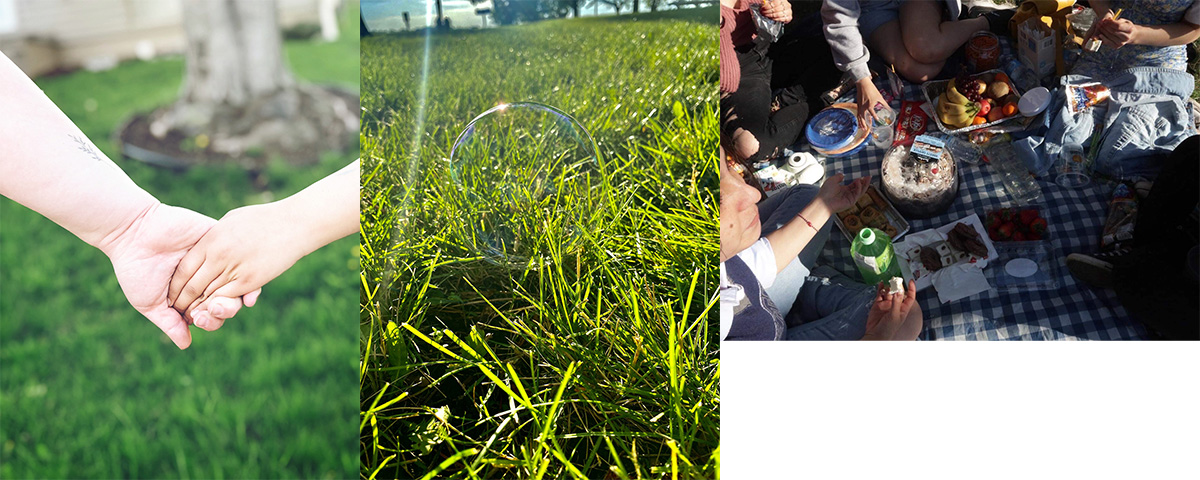
By Emily Gratopp, Extension Educator in Lancaster County
What does “healthy lifestyle” mean? What makes a healthy community? These are two of eight questions relating to health that myself and two UNL faculty, Dr. Lisa Franzen-Castle and Dr. Paul Springer, asked Lincoln community members. The answers we received are powerful and enlightening.
We hosted nine focus groups with over 70 participants, including subpopulations like individuals who speak Spanish, are or were recently unhoused and participate in the Asian Community and Culture Center. Approximately half of the participants were individuals who have experienced health disparities in Lincoln and half were social service providers and stakeholders. We also engaged eight high school youth in a PhotoVoice project, aimed at creatively amplifying their perspectives on building a healthy community.
A common answer to the first question, “What does ‘healthy lifestyle’ mean to you?” involved balance between aspects of health. One participant quote summarizes the theme well, “I would say, to begin with, body, mind and soul. If we have all three going together, it seems, it’s a magic balance in people. If you can achieve that healthy balance of body, mind and soul and balance that into your daily living, then you’re gonna do really well.”
BARRIERS TO HEALTH
There are barriers to accessing these elements of health, including financial, transportation and quality of care, as well as, racism and discrimination. The lack of a convenient public transportation system was lamented at all focus groups. Relating to quality of health care, one participant recounted, “I've been on both ends of the spectrum. I've had private insurance and I've had Medicaid. My experience has been night and day between when I've gone with private insurance versus Medicaid. I feel the quality of care of the places I've gone, or I've taken my kids, is not the same.”
Similarly, several participants mentioned discrimination being a barrier including, “There is this idea of the darker your skin, the thicker it is. I have had small experiences, such as micro-aggressions. My wife is white, so many times when there are things with the kids, it is best if she goes because the doctors will treat them better than if I go with the kids.”
BREAKING BARRIERS TO BUILD COMMUNITY HEALTH
How do we build community-wide health given the barriers to access health? Building a healthy community involves multiple solutions. One participant best captured the complexity of building a healthy community in his quote, “I think there's not only one factor for community health, I believe it's interrelated. It’s like a web of factors that makes a community very healthy. It's about safety. It's about playgrounds. It's about education. I mean, there's so many factors, in my opinion, that all contribute to a healthy community.”
THE POWER OF CONNECTION
Many factors contribute to a healthy community. However, in all focus groups, there was a consistent theme of building healthy communities: connection and being neighborly. When we asked participants what would most improve the quality of life for the entire community, this is what we heard: “Getting to know your neighbors is important for safety and taking care of your fellow humans. You never know when someone will need some form of assistance.”
“To me a healthy community is to first start at home, ourselves, then our kids — teaching them the values so their generation gives the best for the neighbors and everyone. They will create a healthy community.”
It seems this simple advice will break barriers and build Lincoln and Lancaster County into healthier communities: helping the closest humans — taking care of one’s neighbors.
Building health means making connections between people and groups of people. High school youth PhotoVoice participants said it best in these three captions to their photos, “Allow others with different backgrounds and ethnicities to be in your life. Don’t be afraid to be in a place where you have so many different people. People make communities interesting.”
“Togetherness doesn’t happen when you lock yourself into a small or lonely place. So it would help you to go out and see other people and try to connect to them by making a connection from your life to their life.”
“So many people are in their own bubbles. They’re not interacting. Pop your bubble. Life is short. Talk with others.”
What connections will you make today — what barriers will you break — to build a healthier community for those closest to you?
Find a full report of the focus group data at http://lancaster.unl.edu/wcc. Contact Emily Gratopp at emily.gratopp@unl.edu to learn how to get involved in building a healthier community.